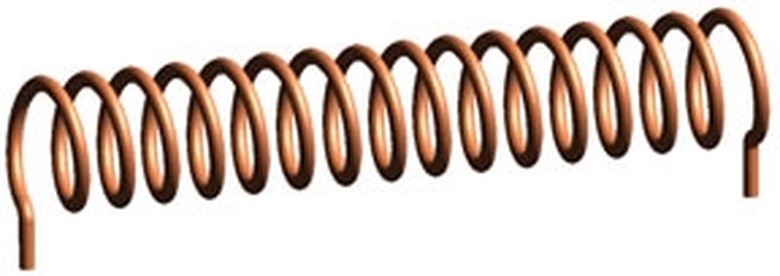The Different Parts Of An Electromagnet
Electromagnets are made from coils of wire that carry electric currents. These current-carrying wires produce magnetic fields that have north and south poles just like regular magnets. Electromagnets have many uses, and are found in devices such as electric motors and generators.
Significance
Significance
Electromagnets are a vital part of everyday life. Motors and car starters use them. They are used to generate electricity to power buildings and devices. Their energy may be transformed into other types, such as mechanical, thermal or sound. Electromagnets are particularly useful for doing electromechanical work such as lifting, pulling, rotating or holding.
Operation
Operation
Electromagnets behave the same way as regular magnets. They have north and south poles, and obey the same laws. For example, their north poles repel north poles from other magnets but attract south poles. Unlike regular magnets, they are constructed so that their magnetic field is impermanent, so it fades away when the electricity is turned off. They are also able to reverse their north and south poles, a feature regular magnets lack.
Construction
Construction
The basic components of an electromagnet are a wire and a power source. The power source may be AC (alternating current) or DC (direct current). The wire may be of any shape. The strength of the magnetic field depends on factors such as the amount of current, the number of coils in the wire, and the material it is made from. For example, electromagnets made from superconductors are powerful enough to levitate the Maglev trains that are used in parts of Europe and Asia.
Special Types of Electromagnets
Special Types of Electromagnets
Solenoids are electromagnets that are in the form of a helix. They are sometimes made with iron inside of them, to strengthen the magnetic field.
Toroids are solenoids that are bent to form a circle. Their magnetic field lines form a set of concentric circles.
Transformers are two solenoids with iron cores inside of them that are paired together. A changing current in the first coil produces a changing magnetic flux in the second. This changing magnetic flux in turn generates an electromotive force, or emf. Transformers only work with alternating current.
Electric motors are made from current-carrying coils that rotate in a magnetic field. The loops regularly reverse direction. They are used to convert electrical energy to mechanical energy. Electric generators are also made from current-carrying coils that rotate in a magnetic field, and they are powered from mechanical energy-producing devices such as coal. Their function is to convert mechanical energy into electrical energy.
Uses
Uses
Solenoids are used as valves, switches, to generate magnetic fields in enclosed spaces, and for electromechanical work.
Toroids are are most often used in nuclear magnetic resonance devices, security applications, and for non-destructive testing.
Transformers are primarily used to convert or transform high AC voltages into lower ones and vice versa. They are found in power lines and power supplies.
Electric motors are used to power devices such as cars, household appliances, tools, and hair dryers. Electric generators generate the AC current used to power buildings and devices.
Cite This Article
MLA
Lewis, Kim. "The Different Parts Of An Electromagnet" sciencing.com, https://www.sciencing.com/different-parts-electromagnet-5344261/. 24 April 2017.
APA
Lewis, Kim. (2017, April 24). The Different Parts Of An Electromagnet. sciencing.com. Retrieved from https://www.sciencing.com/different-parts-electromagnet-5344261/
Chicago
Lewis, Kim. The Different Parts Of An Electromagnet last modified March 24, 2022. https://www.sciencing.com/different-parts-electromagnet-5344261/
